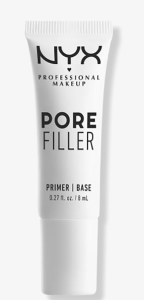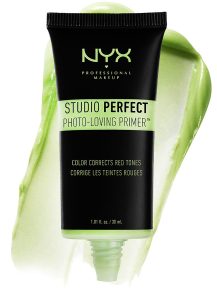Should You Be Using Primer?
By Gina Jet Ortiz
If you’re not already familiar with Foundation Primer, simply known as “primer,” then this might be helpful information for you. Even if you’re already a primer user, are you using the right one? Experienced makeup artists know that a million different types of primers exist for many purposes and corrective properties, so knowing the right one to use on the right skin type can be challenging. But you must first ask yourself: Do I Really Need a Primer?
In case you’re not especially familiar with the main purposes of primer, it’s pretty straightforward. Primer gets your skin ready for makeup. Although we makeup artists (and makeup wearers) managed to survive for decades before the advent of primer, it has made a substantial difference in the quality and longevity of our makeup applications. It’s a nice tool to have in your arsenal but it’s not always necessary.
For instance, one of the biggest advantages to wearing a primer is longevity. Simply put, it helps your makeup stay on longer. However, if you’re not needing or wanting your makeup to stay on for 8 hours or longer, you can skip it. If you’re just going to get some practice in, or if you just want to doll up for some selfies or a quick dash to the store, then you can skip it. On the other hand, if you’re going to be out and about for a while or might be in warm weather for an extended period of time, then you should definitely use it. For a date? For sure!
Other corrective properties include color correcting, such as toning down redness with a tinted primer. If you have large, visible pores you can select one that minimizes the appearance of pores by literally “filling them in.” Some will smooth fine lines, some will hydrate the skin, and some will “mattify” oily skin.
So which one should you use?
Do you have oily or shiny skin? Use a mattifying primer. Do you have dry, tight skin? Then use a hydrating primer. Large, visible pores? Use a “poreless” primer. Do you have excess redness on parts of your skin? Then a color-correcting (mint green in color) will do the trick.
All of these different primers and I still haven’t mentioned the fact that most of these are silicone-based because most foundations are now silicone-based. Sure there are still a few foundations left that are water-based, and many of the thick, heavy stick foundations are oil-based, but most are silicone-based and many are a hybrid of water and silicone. So then how are you supposed to know which ones are which?
You must always be sure to use a primer that is compatible with your foundation, and the easy way to find this out is a simple ingredient-check on the bottles or packaging. If the first few ingredients in your foundation are words like “dimethicone,” “trimethicone,” cyclomethicone, or end with “-conol,” “siloxane,” or “-icone,” then they are silicones. Even if the first ingredient is water or agua and the next few words have the above names or suffixes, then they are still silicones. All of the pore-filling primers are silicone-based so they will work in harmony with your silicone-based foundation (of which most of the long-wear types are). It’s less complicated than I’m probably making it sound, so the bottom line is to read the labels of both the primer and the foundation and if you see most of the same words on both containers, then they’re probably compatible. The big problem would be if you tried to use a water-based formula with a silicone-based formula. Water and silicone are not friends and they will work hard to get away from each other. The result will be separation of the products and it is very visible and yucky. Oil-based foundations, such as the stick foundations we all love so much, are compatible with silicone-based primers but not water-based primers.
My recommendation for primer is to start out with the more affordable drugstore brands to try them out before you go out and splurge on the $60 Dior. Get used to these products and figure out if they are working for you and if they’re worth it. When used correctly, they really can make a difference in your makeup experience. All of my below recommendations are available nationwide at most drug and department stores and generally range between $10-$15.
For hiding and smoothing pores, try:
- E.L.F. Poreless Putty (Putty or Liquid)
- L’Oreal Prime Lab 24 Hr. Pore Minimizer
- L’Oreal Age Perfect Blurring Face Primer
- Revlon Photo Ready Perfecting Primer
For Correcting Redness:
- NYX Studio Perfect Photo Loving (green)
- E.L.F. Tone Adjusting Primer (green)
- L’Oreal Prime Lab 24 Hr. Redness Adjuster
For Mattifying (for shiny or oily skin):
- NYX Shine Killer
- L’Oreal Prime Lab 24 Hr. Matte Setter
- Neutrogena Mattifying Primer
For Hydrating (for dry skin):
- Neutrogena Glow Primer + Serum
- NYX Hydra Touch
- E.L.F. Hydrating Face Primer
- Milani Skin Quench Hydrating Primer
Category: Makeup, Transgender How To






